Sculpting Bonds Between Women and Wildlife Through Jewelry Design
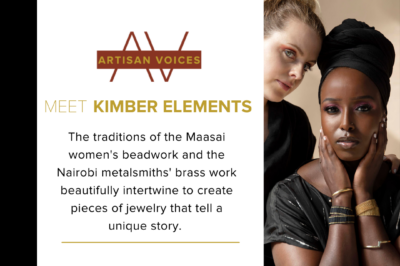
The traditions of the Maasai women’s beadwork and the Nairobian metalsmiths’ brass work beautifully intertwine to create pieces of jewelry that tell a unique story. A parallel can be seen between purposefully woven handicraft preservation, social impact, access to education, and wildlife conservation.
A Q&A with Kimber Leblicq, founder of kimber elements, explains the intertwined elements and how her brand is sculpting bonds between women and wildlife.
Themes of cultural mindfulness, collaborating with artisans, and solo-social-entrepreneurship challenges emerge within this open and honest dialogue.
What is kimber elements’ founding story?
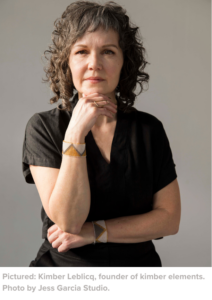 As a metalsmith and jewelry designer, I founded kimber elements in 2011 as a modern jewelry brand known for its wearable sculpture. For 9 years I was the sole designer and maker. In 2019 I visited Kenya to understand the complexities of human-wildlife conflict and to observe how Kenya was at the forefront of addressing it. As human populations expand and natural habitats shrink, people and animals are increasingly coming into conflict over shared natural resources. Human-wildlife conflict is often very complex and poorly understood due to underlying cultural, political, and economic aspects. The most important lessons I learned are that it’s critical for people to support conservation and for conservation to support people; and that social justice and wildlife conservation are deeply interconnected.
As a metalsmith and jewelry designer, I founded kimber elements in 2011 as a modern jewelry brand known for its wearable sculpture. For 9 years I was the sole designer and maker. In 2019 I visited Kenya to understand the complexities of human-wildlife conflict and to observe how Kenya was at the forefront of addressing it. As human populations expand and natural habitats shrink, people and animals are increasingly coming into conflict over shared natural resources. Human-wildlife conflict is often very complex and poorly understood due to underlying cultural, political, and economic aspects. The most important lessons I learned are that it’s critical for people to support conservation and for conservation to support people; and that social justice and wildlife conservation are deeply interconnected.
During my travels I met a Maasai community who invited me to collaborate with them to create an artisan group made up of 30 women. Gaining access to a global market in order to make a sustainable livelihood is logistically and socially challenging for these Maasai women. Ultimately, our partnership inspired me to rebrand kimber elements in 2020 to be a female-forward social enterprise showcasing unique global handcrafted jewelry. In addition to collaborating with our Maasai artisans, I’m now expanding my partnerships to include metalsmiths from impoverished communities in Nairobi who fabricate our reclaimed brass jewelry.
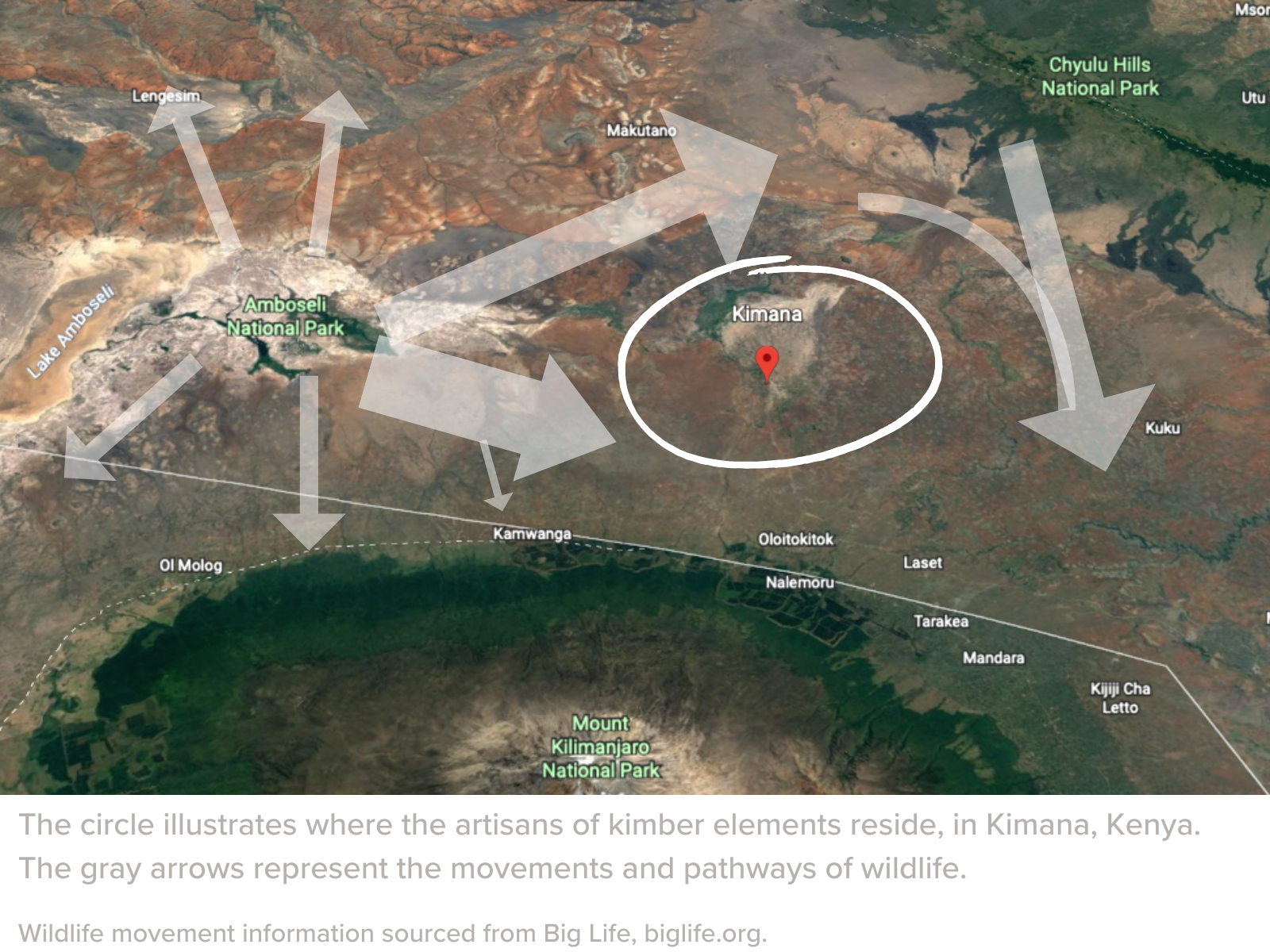
What is your approach to partnering and collaborating with your artisans?
Our Maasai artisans are extremely organized and have established officers for the group. My local point of contact is a married couple from the community, Naomi and Isaiah. Isaiah is a conservation guide and is a role model within the community. Naomi is a teacher and a strong advocate for providing education for girls and keeping them in school.
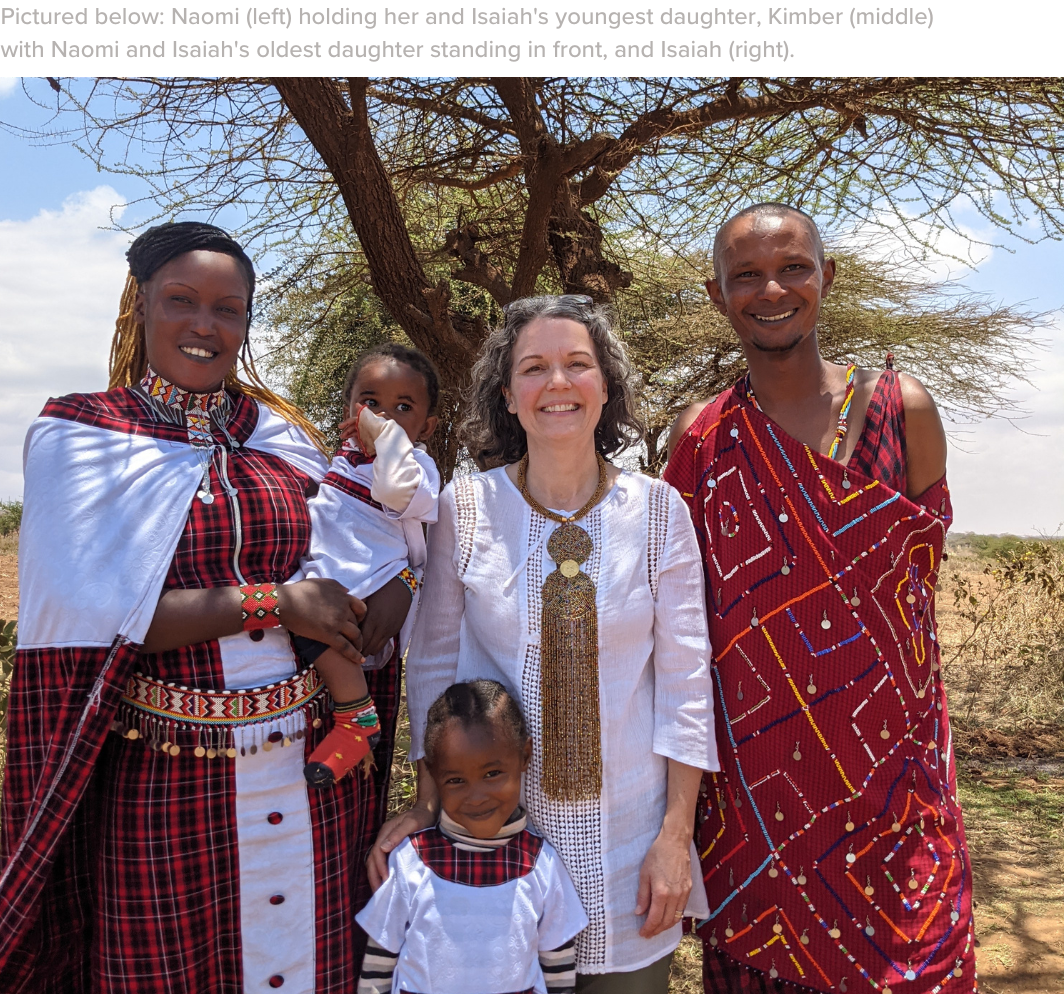
How I collaborate with our Maasai artisans has evolved over the past three years. What it comes down to is having an effective way to communicate. Honestly, it was challenging in the beginning as we had to learn how to work with one another and our cultures. Our Maasai artisans reside in a wildlife corridor where human-wildlife conflict is prevalent. They’re also pastoralists and move often to care for their livestock so they may not always be in the same location. They also have children to raise, households to run, and often walk very long distances to do their beading in a group setting. The logistics they face on the ground and in their daily lives can be complicated.
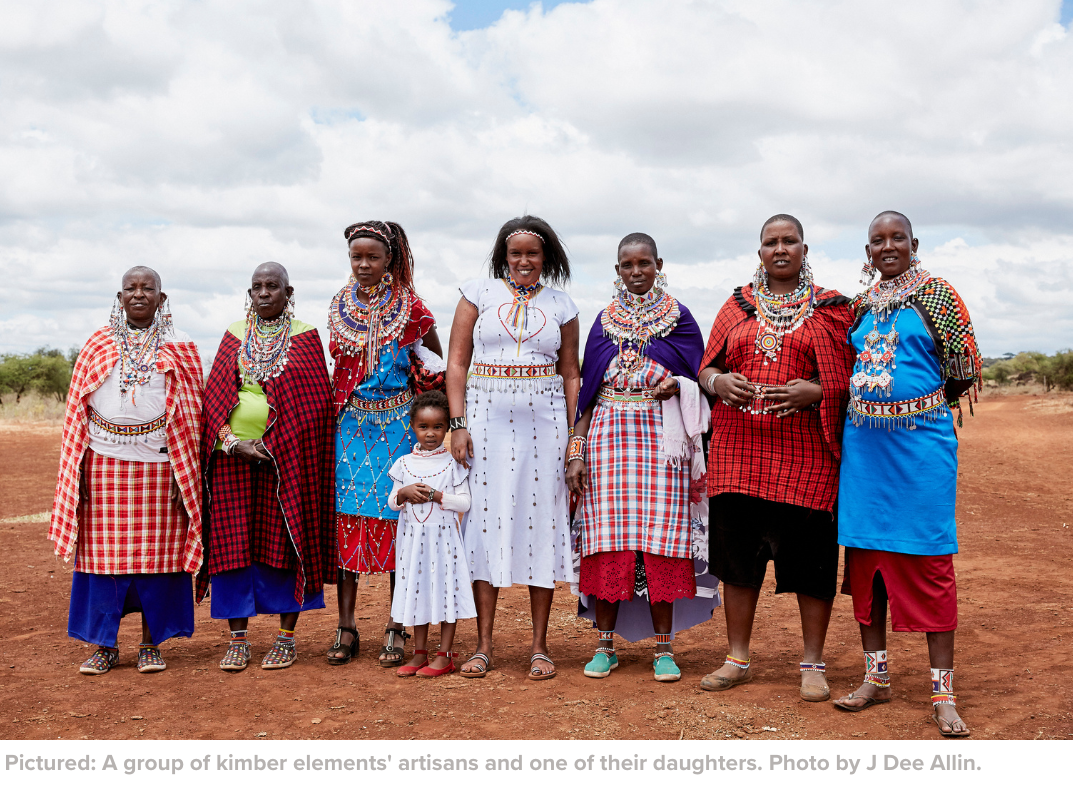
It’s difficult to manage quality control when you’re working with many hands. The challenge for me was how to communicate the importance of having a consistent product. Exporting bulk orders to a global market was new for them, as they were used to one-off transactions within their local markets and to tourists. To overcome this I hired a Fair Trade Consultant who developed systems, protocols, and design templates to support remote communication in a very visual way. All of our designs and samples are successfully communicated using Whatsapp.

With cultural preservation at the forefront of kimber elements’ vision, can you describe the design process?
kimber elements strives to preserve and celebrate traditional Massai handicraft. Our designs evolve out of an ongoing dialogue and a melding of our strengths. Although the Kenyan Massai traditionally wear very bold and beautiful colors, our designs use a minimal color palette to not only appeal to a global market but to also make them timeless. We don’t follow fast fashion trends. There’s a fine line between cultural appreciation and cultural appropriation, which can often lead to the dominant culture borrowing and exploiting the marginalized culture. I’m sensitive to this risk, and I’m committed to upholding the dignity of our artisans by celebrating their cultural techniques and sharing their stories as the designers and makers.
When we design virtually, we send ideas, sketches, and photos of samples using Whatsapp and iterate until we get the design just right. Then we go into production. Sometimes this looks like our artisans sending me pictures of a bracelet or earring they’ve created and asking me if I like the pattern and to choose the colors. The bead colors they have easy access to are mostly primary colors and black and white. They get their bead materials from a local market and if we want to use different colors, they have to go to Nairobi which is about 225 miles away.

A different design flow is designing in person, which I prefer and try to do once a year. We sit and draw together and I ask the women questions about the meaning behind certain patterns and colors. They’re teaching me about their traditional ornamental beadwork that’s inspired by storytelling and beautiful geometric patterns.
Can you expand upon kimber elements’ connections between preserving traditional handicraft, promoting economic stability, providing education, and protecting wildlife? How does the social impact intertwine?
Those are all the core values of our business. I’ve touched a bit on preserving traditional handicraft by honoring and incorporating traditional Maasai designs into our products.
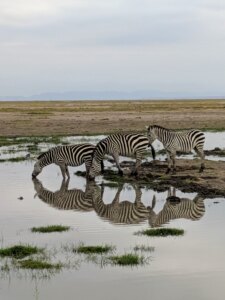 kimber elements also supports our artisans to thrive economically. When they first approached me to do this project, their primary goal was to reinvest their beading income in creating alternate sources of revenue such as beehives and livestock. The artisans collectively decide as a group how they are going to distribute and reinvest their income as they know best what their community needs.
kimber elements also supports our artisans to thrive economically. When they first approached me to do this project, their primary goal was to reinvest their beading income in creating alternate sources of revenue such as beehives and livestock. The artisans collectively decide as a group how they are going to distribute and reinvest their income as they know best what their community needs.
And finally, providing education and protecting wildlife developed as an organic yet intentional conversation. The last time I visited we discussed wildlife conservation; how it’s a viable livelihood in their community; how women are underrepresented; and how preserving their communal land is important to them. Wildlife conservation is a personal passion of mine as well, which I think is another illustration of how our partnership nicely aligns.
How did the WILDest Dreams scholarship program begin? Can you share more about this initiative?
Indigenous girls living in rural areas of developing countries do not often have access to quality education, and therefore have less opportunity for social and economic advancement. The financial, social, and physical barriers that deny education to girls are numerous and nearly impossible for all but the most determined to overcome.
Our WILDest Dreams scholarship program helps circumvent the economic, social, and cultural factors that prevent girls from receiving an education. kimber elements dedicates 10% of each jewelry purchase to provide educational opportunities for our artisans’ daughters to study and pursue a career in wildlife conservation in order to support the next generation of environmental stewards. Our scholarship recipients are identified by our artisans based upon need, academic performance, and timing. Scholarship funds are transferred to Big Life Foundation, our trusted conservation partner, who distributes the school fees on our behalf through their established and reputable scholarship program.
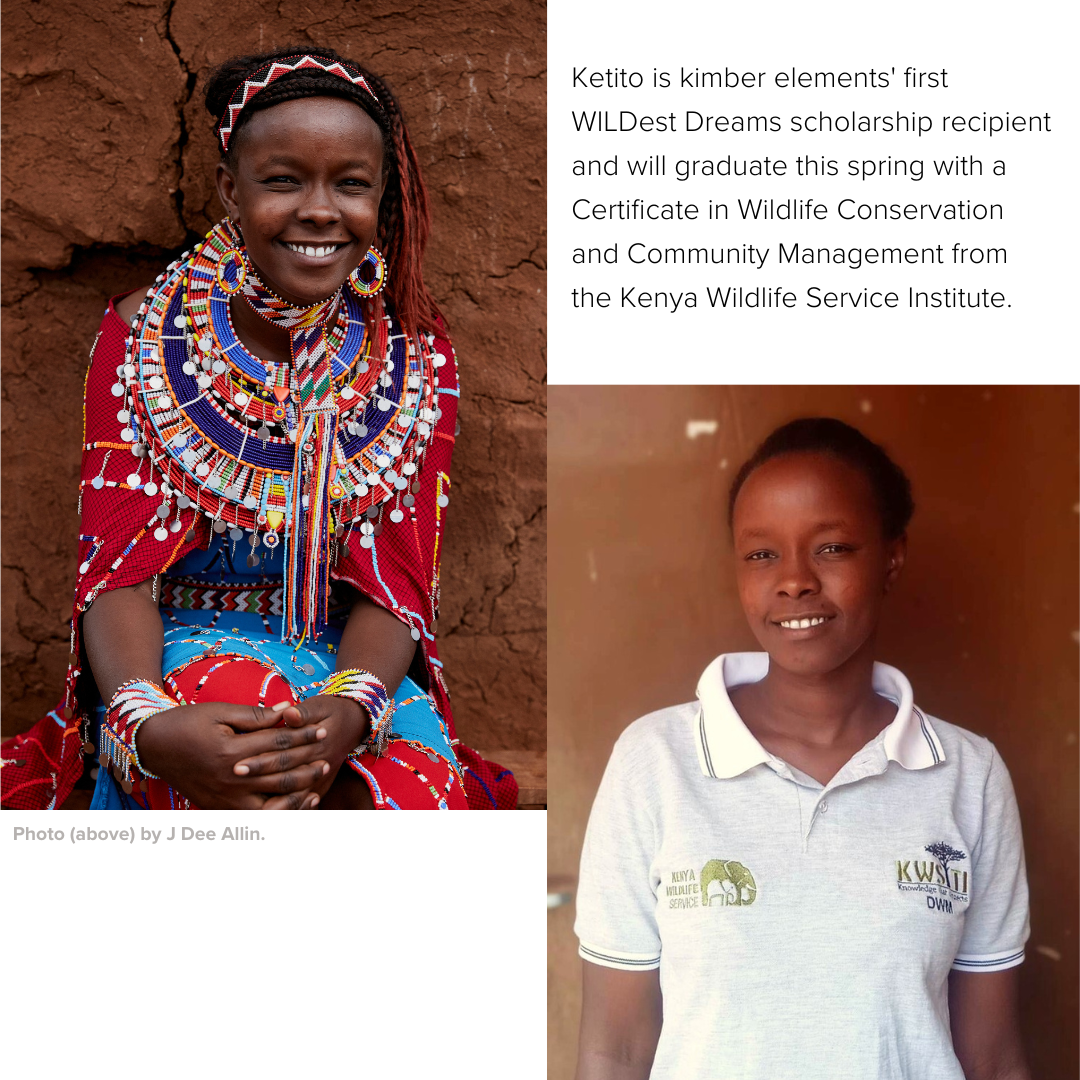
We [kimber elements] interviewed Ketitio about her passion for wildlife and how she was determined to overcome challenges to serve her community; conserve and protect the biodiversity on her communal land; and be a role model to pave the way for women in conversation. The interview with Ketito can be found on our blog.
Is your inspiration for creating kimber elements different from your inspiration today? If so, how has it evolved?
My inspiration has obviously evolved and changed over the past decade. kimber elements was originally focused on me as the maker creating unique sculptural jewelry. Now through my collaboration with global artisans, we’re sculpting bonds between women and wildlife through jewelry design. This transformation involved being true to myself and my brand and listening to my instincts while having an openness and willingness to evolve. Although I did stick with my founding brand name, kimber elements, I grappled with whether I should keep my name in the brand since I’m no longer the maker. I ultimately didn’t end up changing it because I see myself as the convener and curator. I also really like the “elements” part, as it leaves my business open to the possibilities of designing and developing products in addition to jewelry, which is something I’m actually considering.
As for what the future looks like, I would like to explore collaborating with other makers, offering other types of products, or exploring beaded embellishments as product packaging. Ultimately, if I choose to work with other artisans, they have to meet kimber elements’ core values of preserving a traditional handicraft and protecting wildlife.
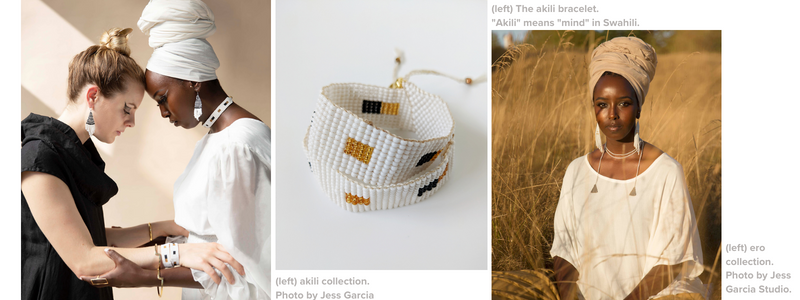
Connect with kimber elements on Instagram @kimberelements and learn more on their blog at www.kimberelements.com/blog.
All photos courtesy of kimber elements.
The Artisan Voices blog explores the histories, experiences, pivotal moments, and innovative initiatives in an artisan or maker business while celebrating craft, community, and culture.